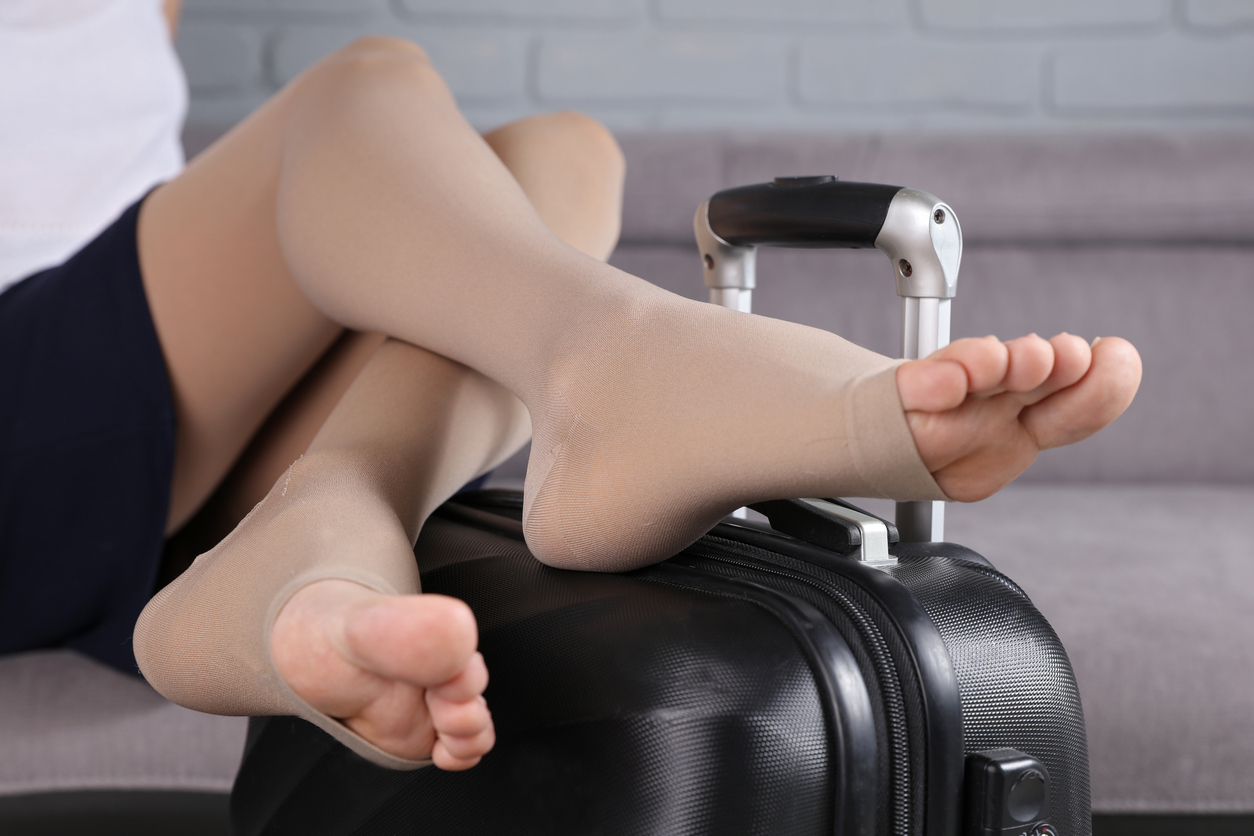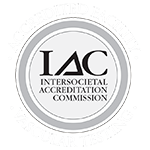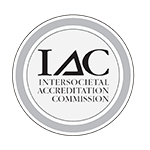
As summer travel plans begin to take shape, many people find themselves embarking on long-haul flights. While the excitement of reaching a new destination often takes center stage, it is crucial not to overlook the importance of maintaining vein health during these journeys.
Prolonged periods of sitting and reduced movement can increase the risk of developing deep vein thrombosis (DVT) and other venous conditions. In this blog post, we will explore various strategies to help you keep your veins healthy and reduce the risks associated with long-haul flights.
Stay Hydrated
One of the most fundamental steps in maintaining vein health during long flights is to stay properly hydrated. Dehydration can contribute to blood thickening, making it more prone to clotting. Drink plenty of water before, during, and after your flight to keep your blood flowing smoothly.
Wear Compression Stockings
Consider wearing compression stockings during your journey. Compression stockings help improve blood circulation by exerting pressure on the legs, preventing blood from pooling and reducing the risk of blood clots. Consult with a healthcare professional to determine the appropriate level of compression for your specific needs.
Engage in Physical Activity
Sitting for extended periods can impede blood circulation, so it's essential to engage in physical activity whenever possible. Take short walks around the cabin, stretch your legs, and perform ankle exercises while seated. These simple movements help activate your calf muscles, aiding blood flow and reducing the risk of blood clots.
Frequent Movement Breaks
In addition to in-flight exercises, frequent movement breaks are crucial for maintaining vein health. Whenever it is safe to do so, get up from your seat and take a walk up and down the aisle if possible. Moving around not only improves blood circulation but also helps prevent stiffness and reduces leg swelling.
Elevate Your Legs
When seated, raise your legs slightly by using a footrest or placing your feet on a bag or cushion. Elevating your legs reduces pressure on the veins and assists in blood flow, combating swelling and discomfort.
Include Vein-Healthy Nutrients
Certain vitamins and supplements can help promote vein health. Consider incorporating the following into your diet:
- Vitamin C: This vitamin plays a crucial role in strengthening blood vessels and promoting healthy circulation. Citrus fruits, berries, and leafy greens are excellent sources of vitamin C.
- Vitamin E: Known for its antioxidant properties, Vitamin E helps protect blood vessels from damage. Nuts, seeds, and vegetable oils are rich sources of this vitamin.
- Omega-3 Fatty Acids: Found in fatty fish, walnuts, and flaxseeds, omega-3 fatty acids aid in reducing inflammation and improving blood flow.
Choose Loose Fitting Clothes
Wearing loose-fitting clothing, especially around the waist, thighs, and calves, allows for better blood circulation and reduces the risk of constriction.
Avoid Alcohol and Caffeine
Alcohol and caffeine can contribute to dehydration, which can increase the risk of blood clot formation. Limit your intake of these substances before and during your flight.
While traveling, it's essential to prioritize your vein health, especially during long-haul flights. By following these strategies, such as staying hydrated, wearing compression stockings, engaging in physical activity, elevating your legs and incorporating vein-healthy nutrients into your diet, you can reduce the risk of venous complications. Remember, even small actions can make a significant difference in maintaining healthy circulation and preventing deep vein thrombosis. Safe travels and take care of your veins!








